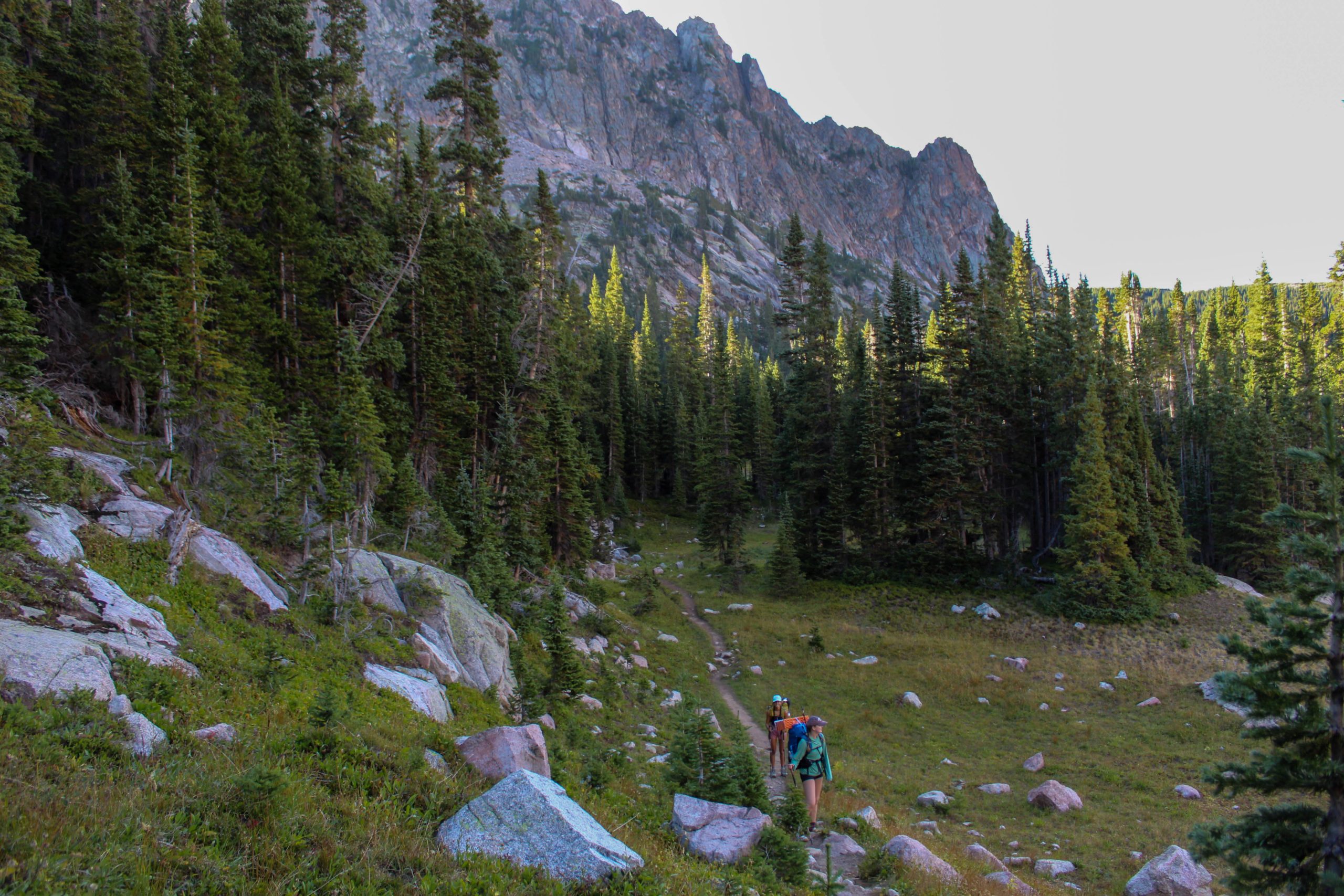TO The decades conservation rule that protects almost a third of the national forests of the United States is under threat, with a proposed repeal that could significantly affect hikers and outdoor enthusiasts.
What is the rule without a road?
The conservation rule of the area without road, commonly known as the Rule without a road, is a federal regulation of the United States that prohibits the construction of a new road and the logging of almost 45 million acres of inventory areas without roads within national forests. Its purpose is to preserve the wild and not developed character of these lands, protecting their ecological and recreational value.
The concept of protection of areas without road gained traction in the 1970s as the forest service began to evaluate and inventory millions of acres of national forests. The first important effort, the program of review and evaluation of the (weird) area of the road, was an attempt to identify adequate land for its inclusion in the National Desert Preservation System.
Trees in the National Forest of the White Mountain. Photo
In 2001, after decades of debate ongoing and legal battles, the rule without road was finished and adopted in the last days of the Clinton administration. The rule was an achievement of historical conservation, protecting vast areas of public lands from new roads and logging, and becoming one of the most significant land management decisions in the history of the United States.
Since its inception, the rule without a road has faced numerous legal and political challenges. The George W. Bush administration tried to repeal it, and has been subject to multiple judicial cases. Some states, such as Idaho and Colorado, have even sought their own versions of the specific rule of the State. Despite these challenges, the 2001 rule nucleus has remained in place in place, and remains an cornerstone of the conservation of the field.
Why would one want to terminate the rule?
As the United States Department of Agriculture responds to President Trump’s desire to increase logging in national forests, they have initiated a regulation process to rescind the conservation rule of the area without a road without 2001. They are currently looking for public comments; Comments must be received before September 19.
Send comments through the Federal Registry
The arguments in favor of terminating the rule without a road are generally divided into three categories: economic interests, management of natural resources and local control. Economically, eliminating the rule would allow greater logging and harvest of wood, a greater construction of the necessary infrastructure for the drilling operations of mining and oil and gas, and other industries, such as gravel extraction.
Within the management of natural resources, some argue that roads are essential to access remote areas for controlled burns, create firewashing and logging to eliminate dead or sick trees that feed large forest fires. The opponents of the rule say that it is a factor that contributes to the increase and severity of forest fires in the West.
Another argument against the rule without a road is that it is a federal mandate of «unique size» that does not take into account the unique needs and conditions of individual states or local communities.
Arguments in favor of the rule without road
Those in favor of maintaining the rule without road also tend to point out economic interests, natural resources and local control, while talking about environmental degradation and a desire for virgin and intact desert.
While industries such as logging and mining offer economic benefits, they often come at the expense of a much larger and more sustainable economic engine: outdoor recreation.
Outdoor recreational economy is a massive and growing sector, which generates $ 1.2 billion in economic production and supports more than 5 million American jobs in 2023. These companies depend on the virgin nature of the areas without roads to attract visitors and prosper. The extraction of short -term resources can permanently damage these landscapes, threatening the long -term economic vitality of communities that depend on recreation and tourism.

Trees in the National Forest of the White River. Photo
There is also a significant rejection against the idea that repealing the rule without road would reduce the amount of forest fires in the American west, since this argument often misrepresents where most fires and damage occur. Most destructive forest fires occur in the urban interface (WUI) (WUI), areas where houses and developments meet the wild lands, not in the remote field.
The solution to these fires lies in a better WUI management and the creation of defensible space around the houses, not in the construction of roads in virgin areas. In addition, areas without roads often contain natural lower, and the greatest access of new roads can actually lead to more ignitions caused by humans, since people start 85% of forest fires in the US.
While the local contribution is valuable, the rule without a road protects a national resource that belongs to all Americans, not only those who live near Earth. These areas without road provide critical ecosystem services that benefit millions of people far beyond their immediate location. For example, national forests and grasslands supply drinking water to almost 90% of people in the west of the United States, and this clean water depends on healthy and not developed basins.
Allowing a mosaic of specific rules of the State could lead to inconsistent protection, endanger vital sources of water and fragment critical wildlife habitats. The rule provides a consistent standard based on science that protects national treasures.
How to take action
This proposed repeal is not a treatment made. The public has a limited window to send comments and express their opinions on the matter. This process is a direct way for citizens to influence the Federal Land Management Policy. You can do this in three different ways:
Send a public comment: People can Send formal comments through the Federal Registry. The period of public comments is a critical step in the regulation process, and a high volume of comments in favor of the rule can influence the final decision.
Contact Representatives: To reach state representatives and leaders of the Congress to express their support to the rule without road and its importance for public lands is another powerful way of taking measures.
Intermace with conservation groups: Organizations such as the Sierra Club and the outdoor alliance are actively struggling to preserve the rule without a road. Follow your updates and support your campaigns provides a way to stay informed and contribute to a collective effort.
This website contains affiliate links, which means that the walk can receive a percentage of any product or service that you buy using the links in the items or ads. The buyer pays the same price that would do it differently, and his purchase helps to support the continuous objective of the walk to address his quality backpack advice and information. Thanks for your support!
For more information, visit the page about this site.


:max_bytes(150000):strip_icc():focal(499x0:501x2)/Mom-on-Life-Support-Chloe-Mowday-121925-2c8863800bb4405da96f02c7059056f1.jpg?w=238&resize=238,178&ssl=1)

